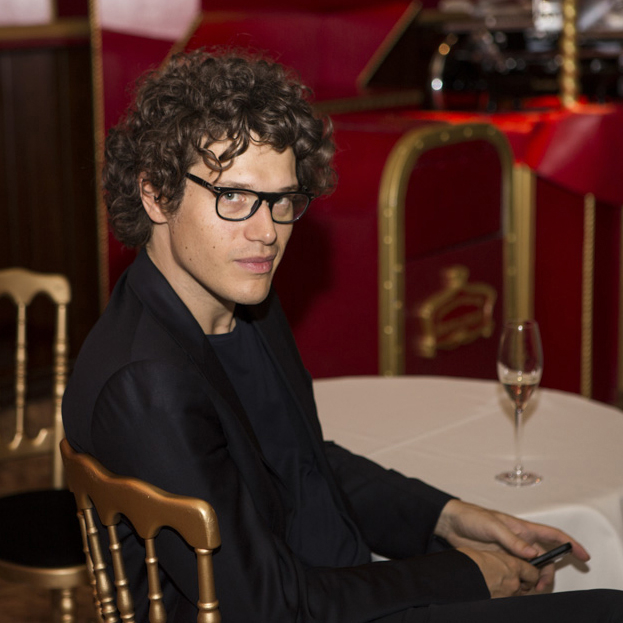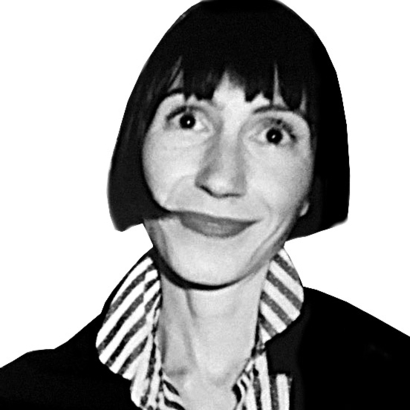It started with a couple of Egon Schiele paintings. A portrait of a male, nude and hunched over, and the other of a woman—both faceless from behind and oblivious-seeming to the heist at play.
They’re the primary targets in the opening scene of Inside, an unnerving psychological drama that tells the story of Nemo (played by Willem Dafoe), an art thief who breaks into a collector’s Manhattan penthouse apartment in an attempt to steal them.
When the security system triggers a lockdown, Nemo finds himself trapped in the home. Unfortunately, the artworks by Maurizio Cattelan, Luc Tuymans, Joanna Piotrowska, and Francesco Clemente can only sustain him spiritually as he struggles to survive on a dwindling supply of food and water.

“I wanted the robbery-related artworks to be iconic,” explains the film’s director, Vasilis Katsoupis. The paintings’ recognizability, along with the rest of the prized collection found throughout the apartment, would communicate the status and connoisseurship of an owner we never see.
Katsoupis wanted to film real works by real artists, and he already had a few in mind. But he needed an insider to get the goods—preferably without committing grand larceny—which is how Leonardo Bigazzi, a 41-year-old Italian art curator, came into the fold.
Working with a pre-production window of less than five months, Bigazzi presented a detailed proposal comprising specific artworks by celebrated artists of various mediums (painting, sculpture, photography, drawing, video), along with an explanation of where each would reside within the apartment, and why.
“We didn’t necessarily go for the names; we went for artists that we felt could understand the concept of the film and fully believe in it,” says Bigazzi. While he already had relationships with most of the artists involved, their participation, he said, resulted from “a labor of trust.”

Many blue-chip artists, from Cattelan and Schiele to photographers Albrecht Fuchs and Adrian Paci, are represented among the 39 works in the film, 5 of which were original commissions, including a drawing by Clemente that lends a human touch to the stark, brutalist apartment designed on a set in Cologne, Germany.
“Surprisingly enough, it was very easy to convince the artists,” Bigazzi said, although more singular challenges often posed themselves in the art itself. They had to painstakingly replicate several of the pieces which would be damaged over the course of the film as Nemo attempts to escape.
The film’s legal team was kept busy drafting contracts, some of which dictated that the doubles would be destroyed after production (with documentation of their destruction sent back to the artist). Others were guaranteed to be returned intact.
Katsoupis and Bigazzi wanted the collection’s significance to be obvious to all viewers, but with Easter eggs and subtle winks on display to delight the art-savviest among them. For example, a photograph by the late Serbian artist Breda Beban (a former professor of Katsoupis’s) features a young Katsoupis and his girlfriend.

The construct of art within the narrative takes on a cruel irony: What value does tens of millions of dollars’ worth of art actually hold in an abandoned space, absent of anyone there to gaze upon it? What about when the sole observer is dying from starvation?
“Nemo activates the art,” said Bigazzi. He stares at it, he speaks to it, and in turn the art shifts from pseudo-protagonist (a representation of its owner) to a sinister nemesis as Nemo’s mental and physical deterioration accelerates.
Nemo instills these masterpieces with a new purpose, too. He employs several of them in the name of survival, most memorably a human-size moth costume by the Kosovar installation artist Petrit Halilaj. With Halilaj’s blessing, Nemo wears the cape-like costume—the original—for warmth. “It didn’t feel quite like destroying art, rather than building different art layers on the existing one,” Katsoupis says.
“Cats die. Music fades. But art is for keeps,” we hear Nemo declare in a voice-over. And in some form or another, he’s right.
Laura Neilson is a New York–based writer and a regular contributor to The New York Times and The Wall Street Journal

